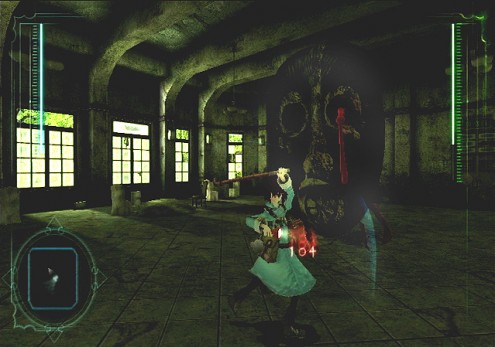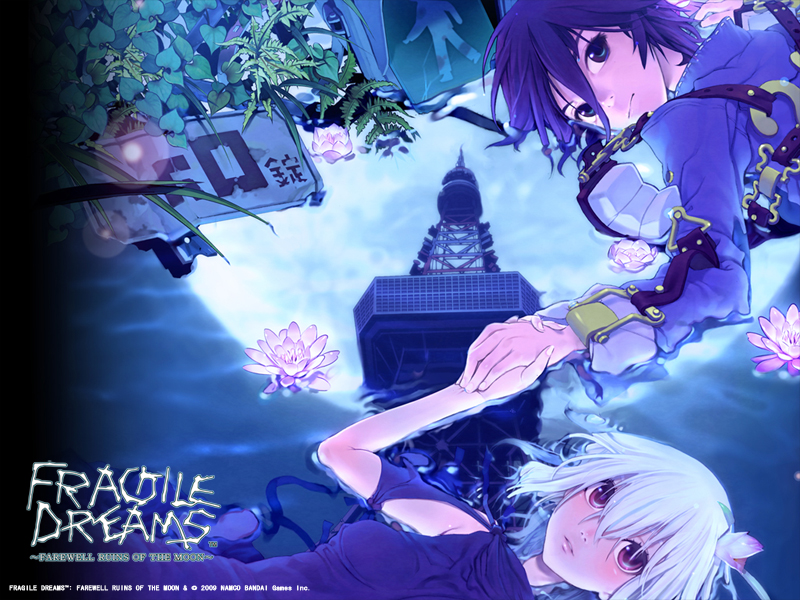Apparently, some kind of undocumented planetary alignment is upon us, because lately I have played some video gameS that I actually rather loved. Yes, after a string of games that I decided (or decided for you) were sub par came and went, I stumbled upon a few older titles for the Nintendo Wii that I quite enjoyed. Today's game is my favorite kind of hidden gem as it is a game completely forsaken by the internet, and it allowed me to prove once again to myself that I, James, am the only person I can trust to be right about anything. So without further narcissism, I give thee Fragile Dreams: Farewell Ruins of the Moon.
Fragile Dreams: Farewell Ruins of the Moon - Nintendo Wii
First off, has anybody ever fucking heard of this game? I sure as hell hadn't before I found it featured in this youtube video https://www.youtube.com/watch?v=zhl6Tn3Kf1c. Fragile Dreams is a...game. You see, I found
Fragile Dreams to be a game containing elements from most genres of video games albeit with an extremely ambiguous core around which each element orbited. At its heart, I suppose
it is an exploration game, but it was
linear, which means you didn't really explore anything more than what was in front of you. There was
combat, but no more than what was necessary. Fragile Dreams was
entirely story driven in such a way that I actually referred to it as a "drama game" for about an hour and a half before remembering that I am an aspiring critic and I have to be careful about using my knowledge in such fields to say stupid garbage like that. Ultimately,
Fragile Dreams boils down to a linear exploration experience with elements of survival horror, JRPG, stealth RPG, and action games. It is also very artsy with
great graphics and music, and every single thing that is on the disc contributes to the game's carefully designed story driving the entire game.
Good Things

Fragile Dreams: Farewell Ruins of the Moon was another short game, clocking in at around
11
hours. I like shorter games because the longer a game is, the greater chance it has to become boring or fuck something up. Short games decrease their risk of becoming boring because they seldom overstay their welcome. It's like how the cool guy at the party stays cool because you only see HIM for a little bit before he leaves to have sex with twins or something, as opposed to the women who get to the party an hour before it starts and leave once they sense that everyone has been sick of them for 9 hours, if you'll excuse my misogyny. Fragile Dreams is a
great example of a game whose story ends at the same time the original ideas do.
Now I guess I should talk about this story for a second, since it's the only reason to play this game. The first thing that happens when you start Fragile Dreams is you get told that the grandfather of Seto, the protagonist, just died. Like, JUST died. You also learn that Seto's grandfather was the only human that Seto has ever seen or known in his life. You then control Seto, wandering around his home for a bit before you find a note left by Seto's grandfather in which he tells Seto to seek this red tower in order to potentially find more "survivors". About two seconds after leaving his home, Seto accidentally startles a girl who upon being startled, falls, and blacks out long enough for Seto to approach her and touch her cheek to make sure she is still breathing (or something). The girl awakens upon being touched, and flees. Seto is then in shock because he has lived something like 14 years and has never seen another human being before. Fascinated by her, Seto spends the rest of the game seeking the girl instead of the red tower, although as you can imagine, the red tower eventually returns. Along the way, Seto meets a number of non-human characters, mostly androids, robots, or ghosts of humans who perished in the disaster that killed mostly everything and the game ends at the red tower with an explanation to and conclusion of the mystery of how the world got to its post-apocalyptic state.

Gameplay involves you walking from one location to the next while the story justifies your doing so.
Seto wields both a flashlight and weapons to be found laying around. Of course though, this world has been destroyed which means the only things laying around for you to wield are sticks, pipes, and brooms of various varieties. Good news though:
swings of your weapon are executed by pressing the A button instead of by swinging the Wii Remote.
Weapons can break if the A button is spammed though, so timing your combos properly is essential, and although it seems annoying and arbitrary at first, you come to love it once you accept that you can't do anything to change it. Of course, with broken weapons comes an inventory system, which is the same as that found in Resident Evil 4.
The flashlight illuminates the dark path that lays before you while also stunning enemies.
Flashlight, intuitively, is controlled by pointing the Wii Remote to the location you wish to illuminate. Using different types of flashlights will make
hidden messages scrawled on the walls of the
subways, hotels, and sewage pipes you navigate appear, and most of them when accompanied by the low piano scores played in the game, are pretty unnerving.
Killing enemies will increase your max strength in a
basic level-up system, and a crawling system is implemented to get past certain enemies or obstacles, making
stealth always a conceivable option in case you decide to become curious about what life would be like if you were an enormous pussy.
Fragile Dreams also makes great use of the Wii technology without using the motion controls. The speaker in the Wii Remote can be used to receive information from other characters by pressing the Wii Remote up to your ear at any point while playing, and creepy laughter of little girls gets pumped through the controller's speaker when ever you're near a hidden enemy.
Really, you're in this game for the
characters. The gameplay is fun, as it is pretty freaky and upsetting sometimes, stimulating an emotional response from me, but the story and fondness for the characters is what will keep you coming back. The story also has
great pace; as soon as one character leaves you, another comes to its place almost immediately. Also, the
voice acting is stellar.
Short-Comings

Most complaints about Fragile Dreams: Farewell Ruins of the Moon regard the fact that the developers clearly cared more about the story than they did about the gameplay. According to professional reviewing companies, the story, while beautiful, overwhelmingly overpowers the bland gameplay. In response, I offer my opinion that the fight choreography in Toby McGuire's Spider-Man 2 overwhelmingly overpowers the personality of Mary Jane. Some aspects of some games are better off being pushed to the background in order to emphasize the game's strengths. In this case, the
game's story shines more than it's gameplay does, so if you have a problem with a strong story being supported by average gameplay, then this game will not blow your mind the way it blew mine.
Conclusion
Fragile Dreams: Farewell Ruins of the Moon is a game for gamers who like a good story. This is a hardcore game simply because it is a hidden gem, even though
it is an easy game. It tells a great 11 hour story, so I recommend this game to anyone who is interested in that. I don't recommend this game as much to people who NEED rich gameplay in order to be engaged, because you won't find it here.












